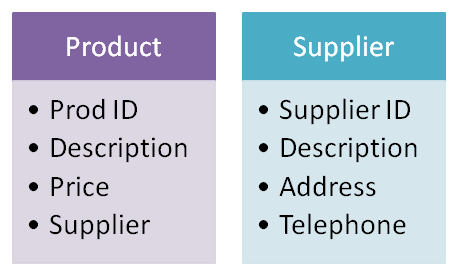3. Entity Relationship Diagrams (ERD)
Any system can be represented as a collection of one or more 'objects', 'things' or 'entities'.
For example a school is made up of one or more buildings each of which contain classrooms, each classroom has a number of desks, chairs and so on.
What you are describing in this scenario is a physical system called a 'school'. The school system can be represented as a collection of entities, each of which have a relationship with one another.
Of course a school is a real physical object, but the idea applies equally well to an abstract object such as a software system. And this is why ER diagrams are so useful - they enable you to see each entity making up a system and their relationship to one another.
Attributes
A single word such as 'school' only provides the very minimum of detail about the object - in your mind you be thinking about its size, buildings, name and so on. These are called its 'attributes'.
An attribute describes one aspect of the entity.
Attributes should be independent of one another - for example if you had a simple physical box, you could choose to use an attribute called 'colour' but then for some reason you also chose an attribute called 'shade'. Now these are describing almost the same thing - a poor choice of attributes can cause uncertainty. The image below shows a set of attributes for two entities named Product and Supplier
challenge see if you can find out one extra fact on this topic that we haven't already told you
Click on this link: ERD Entity Relationship Diagrams

